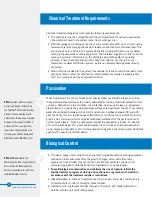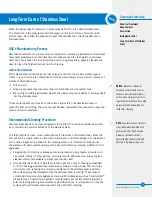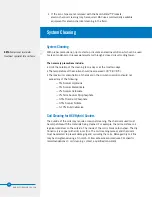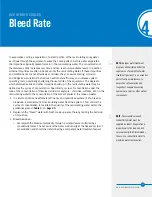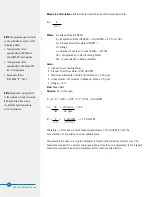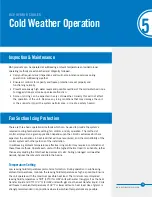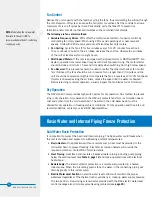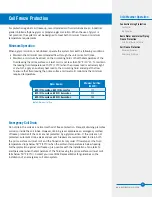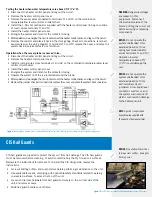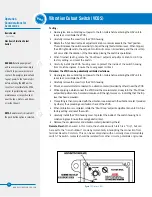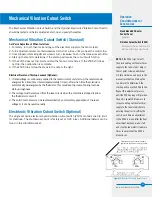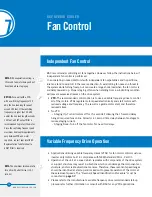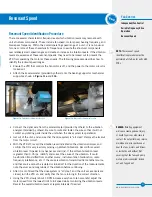
22
HXV HYBRID COOLER
Corrosion Protection
BAC products are constructed of corrosion-resistant materials. The fill, eliminators, hail
guards, and distribution piping are made of polyvinyl chloride (PVC), which is impervious to
rot, decay, rust or biological attack. Other corrosion-resistant materials listed below are used
in the equipment construction
• Galvanized Steel Components: Inspect the galvanized steel components for blemishes or
corrosion. Wire brush and recoat the affected areas with a cold galvanizing compound
such as zinc rich compound (ZRC).
• Thermosetting Hybrid Polymer Components: Inspect the galvanized steel components
protected with the thermosetting hybrid polymer for scratches, scrapes, or blemishes.
To cosmetically touch up these areas with color matched paint use BAC Part #160133
available from your local BAC Representative.
• Stainless Steel Components: Inspect stainless steel components for signs of blemishes
or corrosion. See “Long Term Care of Stainless Steel”
page 25 for cleaning and care
instructions.
• TriArmor
®
Corrosion Protection System: Inspect components protected with the TriArmor
®
Corrosion Protection System for signs of deep scratches or blemishes, especially in areas
with field penetrations. Touch these up with 3M™ Windo-Weld™ Super Fast Urethane
which is available through your local BAC Representative (BAC Part # RK1015).
Water Treatment
A proper water treatment program, administered under the supervision of a competent
water treatment specialist, is an essential part of routine maintenance to ensure the
safe operation, efficiency and longevity of evaporative cooling equipment, as well as
other system components. In evaporative cooling products, cooling is accomplished by
evaporating a small portion of the recirculating water as it flows through the unit. As the
water evaporates, the dissolved solids originally present in the water remain behind and if
not controlled, the concentration of dissolved solids will increase rapidly. This can lead to
corrosion, scale or biological fouling which may negatively affect heat transfer as well as
the longevity of system components.
•
Corrosion
– Red rust on steel components and white rust on galvanized surfaces may
affect the longevity of system components.
•
Scale Formation
– Scale, typically a calcium or magnesium based build-up, not
only reduces heat transfer and system efficiency, but also may lead to under deposit
corrosion. If scale is not controlled, it may continue building on critical components
such as the fill and evaporative coil surfaces, severely impacting thermal performance.
•
Biological Fouling
– Slime and algae formations may reduce heat transfer, promote
corrosion, and harbor pathogens such as
Legionella.
NOTE:
Since the quality of the
ambient air and make-up water
varies significantly from job site to
job site, BAC strongly recommends
obtaining the services of a qualified
water treatment specialist prior
to the initial start-up of the
evaporative cooling equipment.
Additionally, to protect against the
risk of Legionella contamination,
never operate the cooling
equipment without adequate
biological control, or without drift
eliminators properly installed.
3
Table 3.
Recommended Levels for Various Materials of Construction
NOTES:
1.
Galvanized steel units require
passivation in order to
prevent white rust (refer to
“Passivation”).
2.
Hardness and alkalinity limits
may be exceeded under certain
circumstances. Consult your
water treatment specialist for
recommendations.
3.
The conversion factor used to
determine conductivity is 0.625
(TDS = 0.625 x Conductivity).
4.
The guidelines above refer to the
materials used in construction.
Different combinations of
materials may be used on the
same unit.
5.
Water chemistry will change
with operating temperatures.
The recommended guidelines
listed in
Table 1
refers to water
temperature at 95˚F.

















